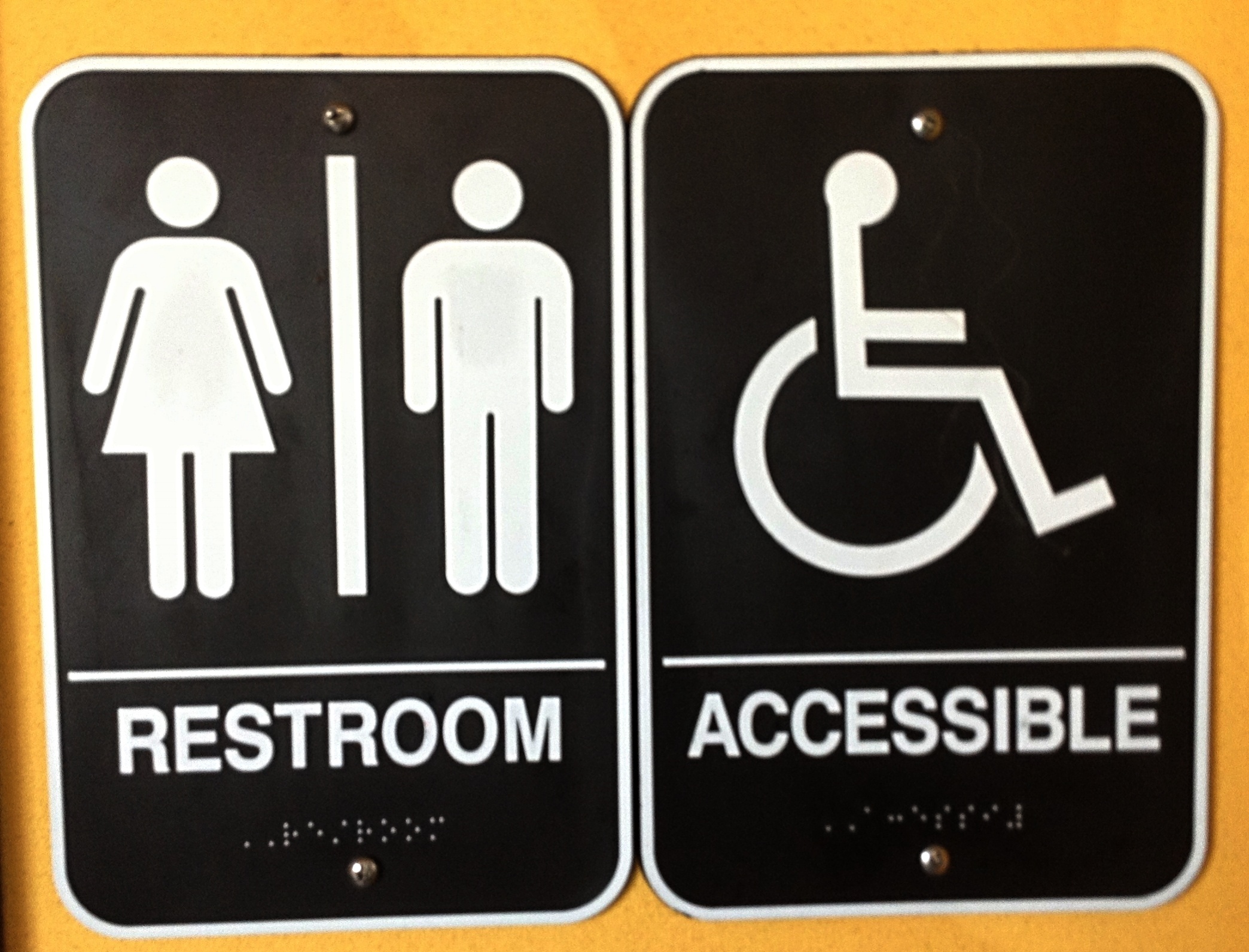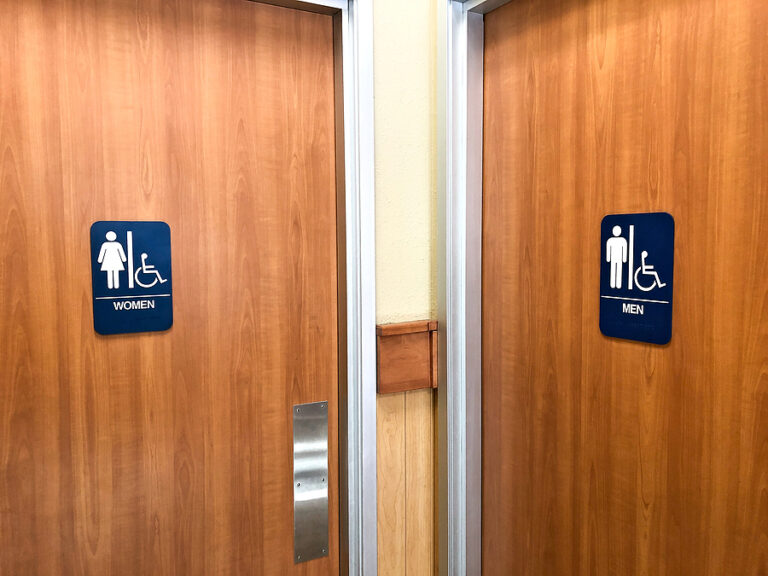ADA Compliant Bathroom Door Basics

Ensuring accessibility in bathrooms is crucial for creating inclusive spaces. ADA compliant bathroom doors play a vital role in achieving this, providing safe and convenient access for individuals with disabilities.
Door Width and Clearance
The width of an ADA compliant bathroom door is a critical aspect of accessibility. This dimension allows for easy entry and exit, accommodating wheelchairs, walkers, and other mobility devices.
- Minimum Door Width: The minimum required width for an ADA compliant bathroom door is 32 inches (81.28 cm). This measurement is taken from the inside of the doorjamb to the opposite inside of the doorjamb.
- Clear Opening: The clear opening, the space available for passage, must be at least 30 inches (76.2 cm) wide. This ensures adequate space for maneuvering wheelchairs and other assistive devices.
Door Hardware
ADA compliant bathroom doors feature specific hardware that promotes ease of use and accessibility.
- Lever Handles: Lever handles are the preferred hardware for ADA compliant doors. These handles are easier to operate than traditional knobs, requiring less force and dexterity. They can be easily grasped and manipulated with a single hand, making them ideal for individuals with limited hand strength or mobility.
- Door Pulls: Door pulls are another acceptable option for ADA compliant bathroom doors. These handles provide a larger surface area for gripping, making them easier to use for individuals with limited hand strength. They are particularly beneficial for those who prefer to use their hands instead of their fingers.
Lever Handles and Accessibility
Lever handles offer several advantages that contribute to accessibility:
- Reduced Force Requirements: Lever handles require less force to operate than traditional knobs. This is crucial for individuals with arthritis, weak grip, or other conditions that affect hand strength.
- Ease of Use: The design of lever handles allows for a more natural and intuitive movement. They can be operated with a simple push or pull, making them accessible for individuals with limited dexterity.
- Universal Design: Lever handles are considered a universal design feature, meaning they benefit everyone, regardless of their abilities. They are easier to use for individuals with children, seniors, and people carrying heavy items.
Choosing the Right ADA Compliant Bathroom Door

Selecting the right ADA compliant bathroom door is crucial for ensuring accessibility and safety for all individuals, especially those with mobility challenges. The door must meet specific requirements for ease of use and functionality, and the choice of materials and design elements significantly impact the overall experience.
Door Material Considerations
The choice of material for an ADA compliant bathroom door is crucial for durability, ease of maintenance, and aesthetics. The most common materials include:
- Solid Core Doors: Solid core doors are known for their durability and sound insulation. They are often preferred in high-traffic areas, offering better resistance to dents and scratches.
- Hollow Core Doors: Hollow core doors are lighter and less expensive than solid core doors. While they provide basic functionality, they are less durable and may not offer the same level of sound insulation.
- Wood Doors: Wood doors offer a classic aesthetic and can be customized with various finishes. However, they require regular maintenance and may be susceptible to moisture damage in humid environments.
- Fiberglass Doors: Fiberglass doors are highly durable, resistant to moisture, and offer excellent insulation. They are a good choice for areas with high humidity or where resistance to impact is a concern.
- Metal Doors: Metal doors are known for their strength and durability. They are often used in commercial settings but can also be a good choice for residential applications where security is a priority.
Door Type Considerations
Different door types offer unique advantages and disadvantages, and the choice depends on the specific needs of the space.
- Single Swing Doors: Single swing doors are the most common type of door, offering a simple and straightforward opening mechanism. They are suitable for most bathroom applications.
- Double Swing Doors: Double swing doors provide a wider opening, which can be beneficial for wheelchair accessibility. They require more space than single swing doors and may not be suitable for all bathroom layouts.
- Pocket Doors: Pocket doors slide into a wall cavity, maximizing space by eliminating the need for a swing arc. They are an excellent choice for smaller bathrooms but may require more complex installation.
- Folding Doors: Folding doors consist of multiple panels that fold together, offering a compact opening mechanism. They are suitable for smaller bathrooms but may not be as durable as other door types.
Comparing Door Styles for ADA Compliance
The following table summarizes the key features of different door styles and their suitability for ADA compliance:
| Door Style | Advantages | Disadvantages | ADA Compliance |
|---|---|---|---|
| Single Swing Door | Simple and straightforward opening mechanism, widely available | May require more space for wheelchair access | Generally compliant if the door swing is wide enough and the door handle is accessible |
| Double Swing Door | Provides a wider opening for wheelchair access | Requires more space than single swing doors | Highly compliant, offering ample space for wheelchair maneuvering |
| Pocket Door | Maximizes space by eliminating swing arc | May require more complex installation | Can be compliant if the opening mechanism is accessible and the door is wide enough |
| Folding Door | Offers a compact opening mechanism, suitable for smaller bathrooms | May not be as durable as other door types | May not be compliant due to the folding mechanism and potential for obstruction |
Installation and Maintenance of ADA Compliant Bathroom Doors

Installing an ADA compliant bathroom door requires careful attention to detail to ensure it meets accessibility standards and provides safe and easy access for individuals with disabilities. This section will delve into the essential steps involved in installing such doors, provide a checklist for verifying proper installation, and offer valuable tips for maintaining their functionality and longevity.
Installation Process of ADA Compliant Bathroom Doors
The installation process involves a series of steps to ensure proper alignment, functionality, and compliance with ADA standards.
- Preparation: Before starting the installation, gather the necessary tools and materials, including the door, frame, hinges, hardware, and any required shims. Ensure the door opening is clear of obstructions and the floor is level.
- Framing: Install the door frame securely to the wall, ensuring it is plumb and level. Use shims to adjust the frame if needed.
- Hinge Installation: Install the hinges on the door and frame, ensuring they are properly aligned and secured. Use self-tapping screws for secure fastening.
- Door Installation: Hang the door on the hinges and adjust it for proper clearance and alignment. Use shims to adjust the door if needed.
- Hardware Installation: Install the door handle, latch, and any other required hardware, ensuring they meet ADA requirements for grip strength and ease of operation.
- Final Adjustments: Make final adjustments to the door and frame to ensure proper alignment, clearance, and functionality.
Checklist for Proper Installation and Compliance
Verifying the installation adheres to ADA standards is crucial to ensure the door’s accessibility and functionality. Here is a checklist to guide you:
- Door Swing: The door should swing outward to provide clear access.
- Door Width: The clear opening width should be at least 32 inches (81 cm).
- Door Threshold: The threshold should be flush with the floor or have a maximum height of 1/2 inch (1.27 cm).
- Door Handle: The handle should be lever-style and have a minimum grip strength of 5 pounds.
- Latch: The latch should be easy to operate and should not require excessive force.
- Door Closer: If a door closer is used, it should be adjustable and have a slow-close feature.
Maintenance Tips for ADA Compliant Bathroom Doors
Regular maintenance is crucial for ensuring the longevity and functionality of ADA compliant bathroom doors.
- Lubrication: Lubricate the hinges and latch mechanism regularly to prevent squeaking and ensure smooth operation.
- Cleaning: Clean the door and frame regularly to remove dirt and debris that can hinder functionality.
- Hardware Inspection: Regularly inspect the door handle, latch, and other hardware for signs of wear or damage. Replace any damaged components promptly.
- Threshold Inspection: Inspect the threshold for any signs of wear or damage that could create a trip hazard. Repair or replace the threshold as needed.
- Door Closer Adjustment: If a door closer is installed, adjust it regularly to ensure it closes smoothly and at an appropriate speed.
An ADA compliant bathroom door, with its wide swing and easy-to-grasp handle, promises accessibility, but sometimes feels like a lonely sentinel guarding a space that’s meant for more than just function. Perhaps a bathroom with two doors, like those found in this article , could offer a sense of shared space, a silent conversation between the individual and the world outside.
Even with its accessibility features, the ADA compliant bathroom door can’t erase the feeling of being alone, a feeling that lingers even as the door swings open.
An ADA compliant bathroom door, with its wider opening and lever handle, promises accessibility, but sometimes it feels like a silent reminder of limitations. Perhaps a standard 24 x 78 bathroom door might have been a more fitting symbol of independence, even if it meant navigating a narrower threshold.
Yet, in the end, the ADA compliant door stands as a testament to the desire for inclusion, a small act of kindness in a world often built for the able-bodied.